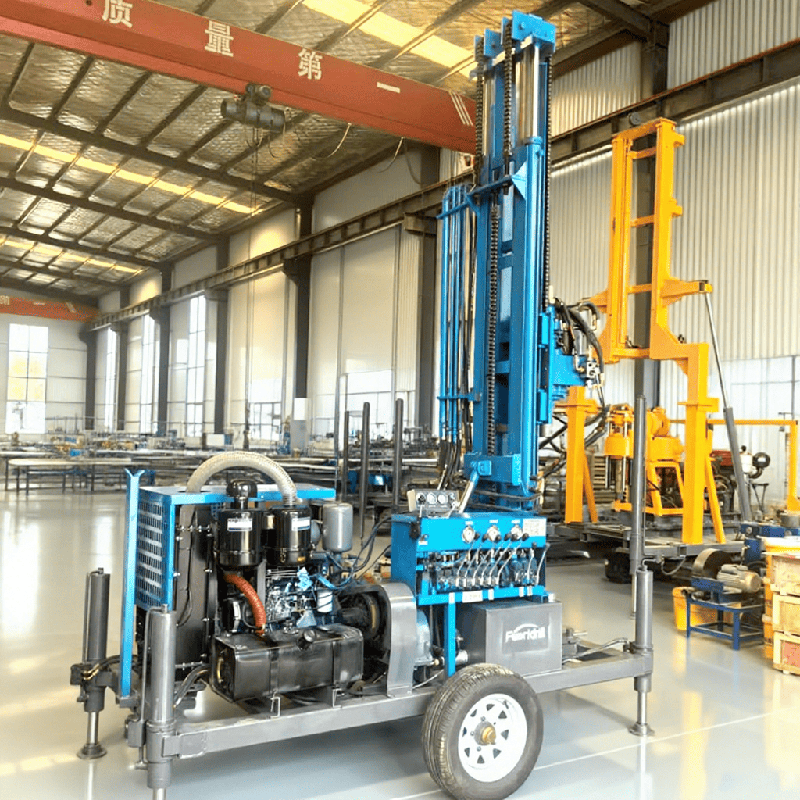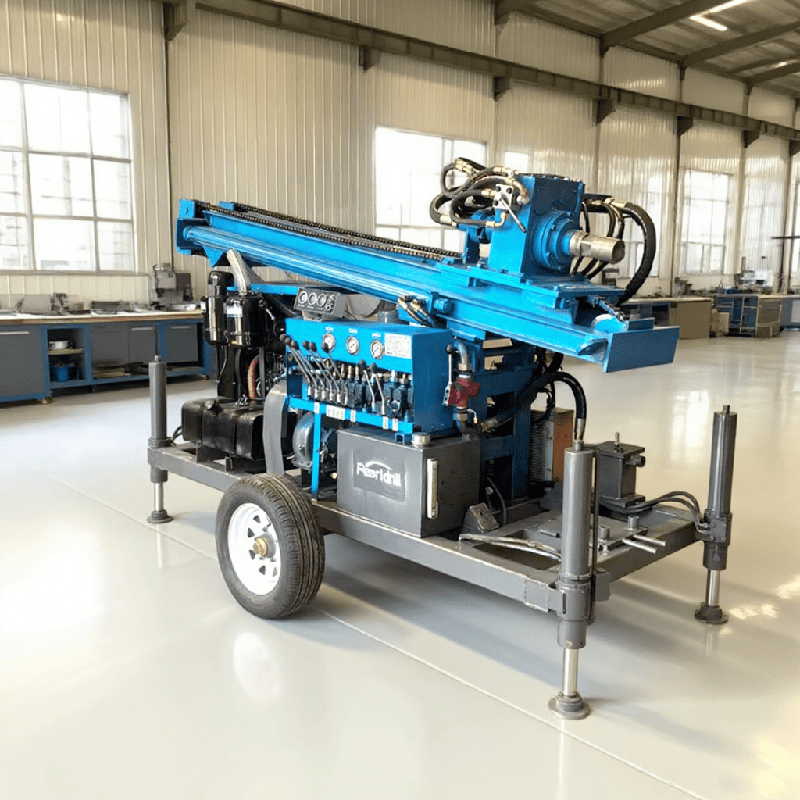How to Choose a 180m Water Well Drilling Rig in 2025
Choosing the right water well Drilling Rig is crucial for successfully getting groundwater. With so many models out there, here's a simple guide on how to pick the perfect one for your needs, based on depth, ground type, rig style, and brand.

Pinpoint Your Core Needs
1. Drilling Depth Capability: How deep do you need to go?
For shallower water sources, a smaller rig might be fine.
For deep underground water, you absolutely need a larger machine with enough power and depth rating.
2. Geological Conditions (The Ground Type):
Soft Ground (sand, clay): Go for a rotary rig or a continuous flight auger rig. They drill fast and are highly efficient in these materials.
Hard Rock (granite, basalt): You'll need an impact rig or a rig equipped with a high-performance Down-The-Hole (DTH) hammer. These use powerful force to break through hard rock.
Consider Rig Type and Mobility
1. Truck/Trailer-Mounted Rigs:
What they are: The drilling system is mounted on a truck or a trailer chassis.
Key Advantage: Highly mobile and quick to move between sites. Great if you change work locations often.
Best for: Projects with good road access that require fast setup and relocation.
2. Crawler Rigs:
What they are: Uses continuous tracks (like a tank) for movement.
Key Advantage: Excellent off-road capability. Very stable and can handle tough, uneven terrain.
Best for: Mountainous areas, muddy fields, soft, or generally challenging ground where a wheeled vehicle can't go.
3. Portable Small Rigs:
What they are: Small, lightweight, often manually assembled or trailer-based.
Key Advantage: Easy to carry, take apart, and can fit into very tight spaces.
Best for: Remote areas, inside buildings, or small-scale, shallow residential wells or geological exploration.

Power, Tech, and Reliability Matters
1. Power and Torque: This is the muscle! A strong engine and high drilling torque are essential for tackling complex geology. Low power means you'll get stuck when you hit hard rock.
2. Safety and Reliability: Choose a rig that's easy to operate and has comprehensive safety features. A reliable machine (low breakdown rate) saves you time and maintenance costs.
3. After-Sales Service: Good brands offer timely spare parts and expert technical support. This is vital for long-term use and minimal downtime.
Case Example: The Pearldrill 180m Rig
1. Model Profile: This is typically positioned as a 180-meter capacity, often portable or small crawler-type rig.
2. Depth Sweet Spot: A 180-meter depth is usually enough for most mid-to-small-scale farm irrigation, general geological surveys, and rural drinking water needs, covering shallow and mid-depth resources.
3. Portability Highlight: The focus on being "portable" or "small" means it's likely a trailer-based system, a mini-crawler, or has a design that can be disassembled. This is key for getting equipment into remote villages or farms where large rigs simply can't access.
4. Best Fit: If your project needs to drill wells up to 180 meters deep, and requires high mobility to frequently move across rough or tight areas, a model like the Pearldrill 180m balances depth capability with transport convenience, offering an efficient and cost-effective solution.
 In Summary:
In Summary:
Choosing a water well drilling rig really comes down to balancing your project needs, the ground conditions, and your budget. Start by figuring out your required depth, then match the drilling method to the rock hardness, and finally, select the best rig mobility for your job site. Make sure to pick a reputable brand, like Pearldrill, to guarantee you get enough power, good technology, and solid after-sales support. That's how you'll end up with the most suitable and cost-effective rig to secure your water supply.
Contact us
Learn More About Chinese Rigs By Clicking The Link For Answers.


